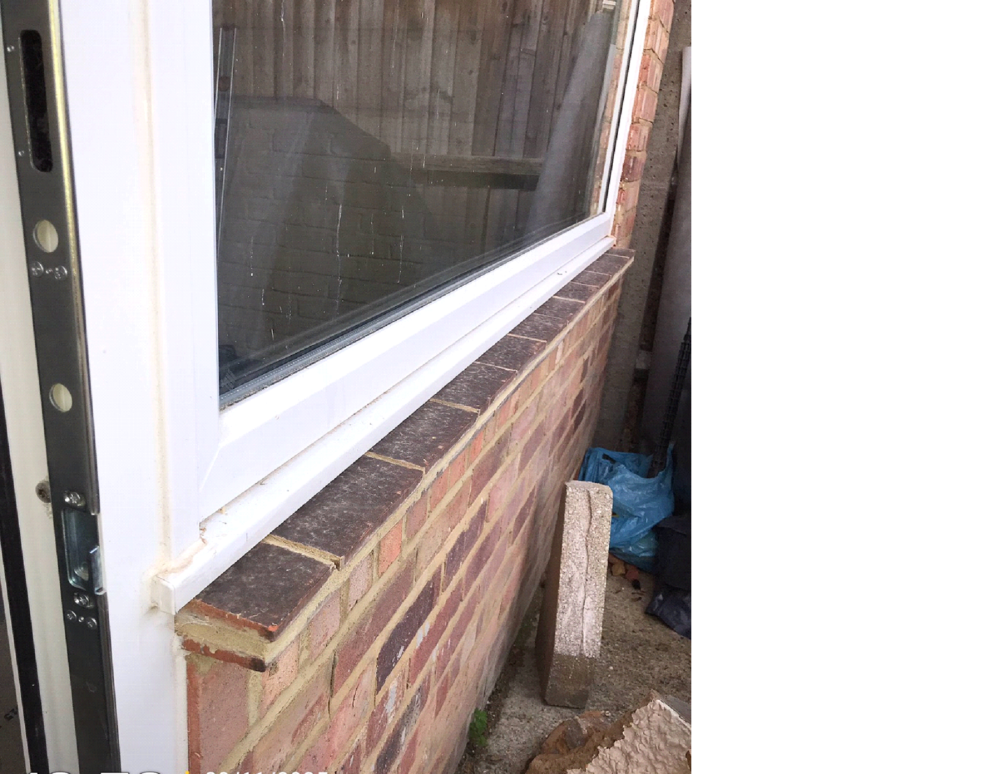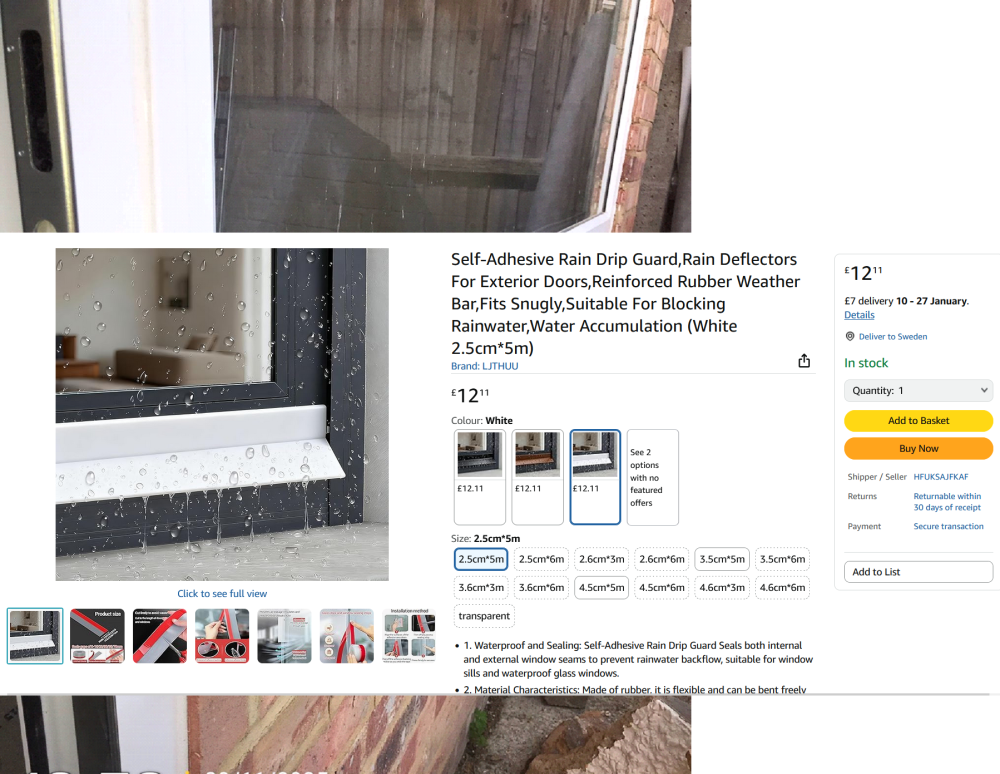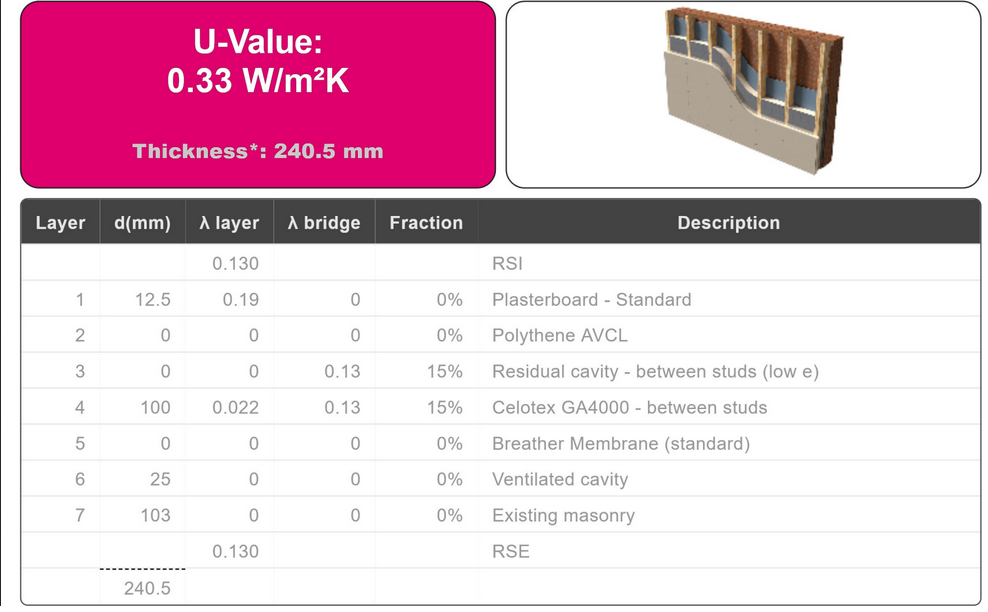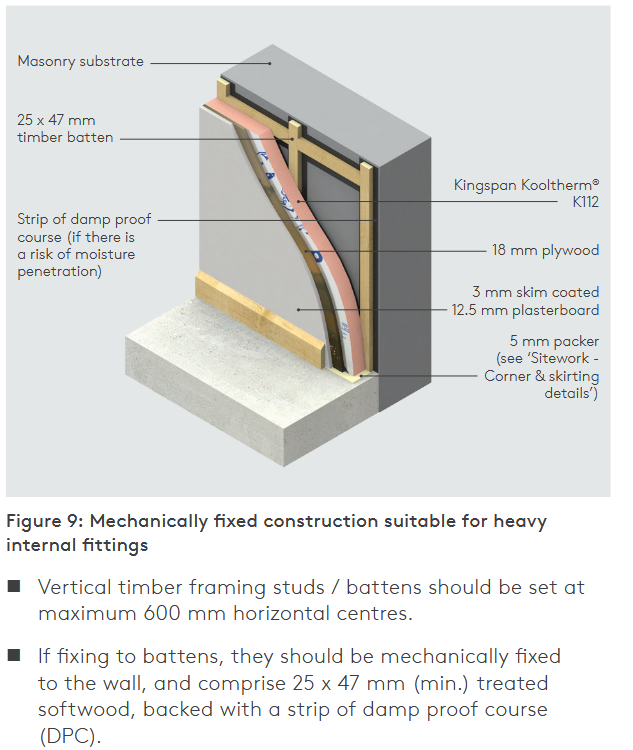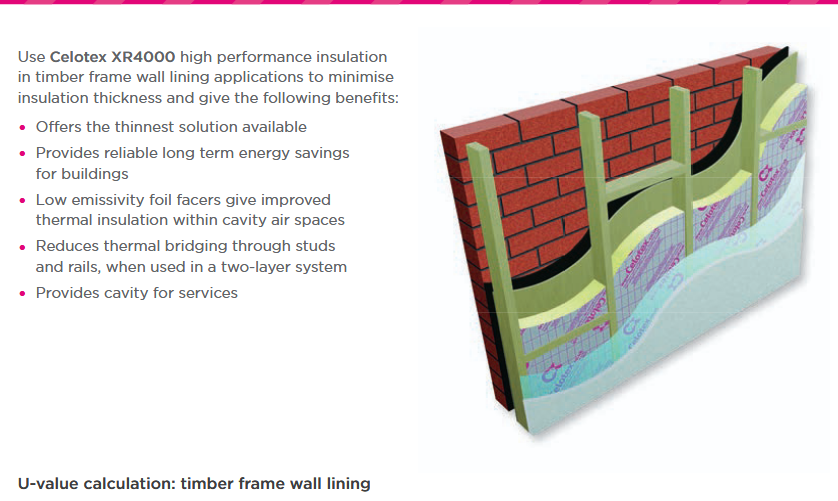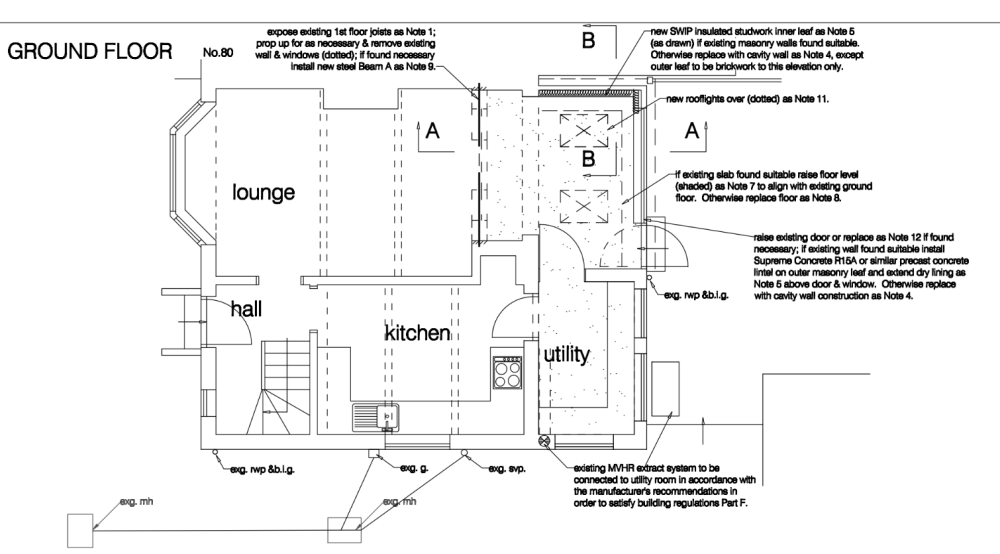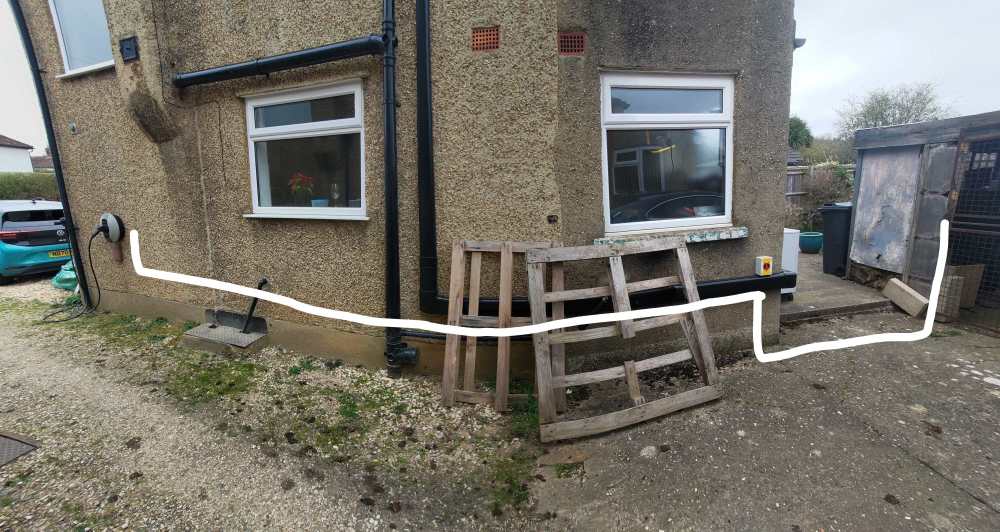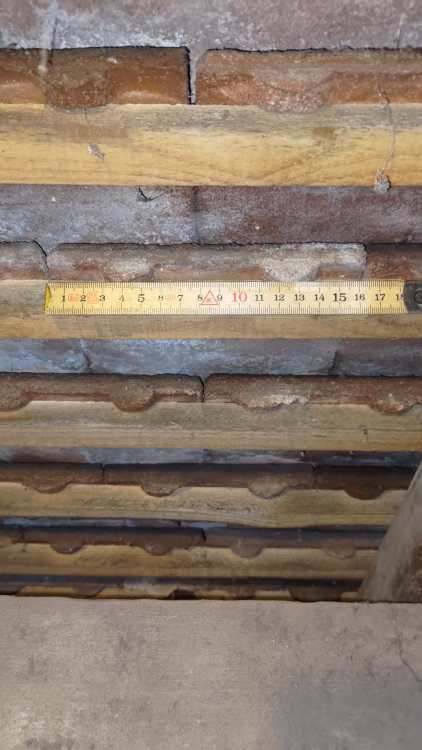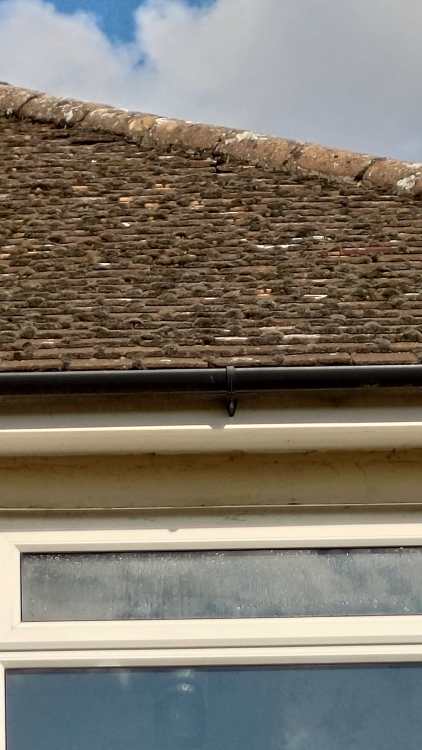
Bruce
Members-
Posts
28 -
Joined
-
Last visited
Personal Information
-
Location
Reading
Recent Profile Visitors
The recent visitors block is disabled and is not being shown to other users.
Bruce's Achievements

Member (3/5)
0
Reputation
-
Waterproofing window sill with too little incline
Bruce replied to Bruce's topic in Waterproofing & Sealants
It's the tiles that they complain about. -
Waterproofing window sill with too little incline
Bruce replied to Bruce's topic in Waterproofing & Sealants
I like the look of that but not sure if it helps with the incline of the sill if just mounted on top of it? -
Our BCO is not happy with the incline of our window sill and say it might lead to water ingress. They alluded that the sill should not need redoing but they were not allowed to tell us how. So I'm after any ideas that we can use/submit on how to retrofit a simple solution to this problem. I'm thinking maybe suggesting something like the below pictured diverter but wanted to see if someone else has done something clever before me? We have had this window like this since August, without any selaent under it (life got in the way) and it has never leaked.
-
Detail of IWI on single skin / half brick wall for picky building control
Bruce replied to Bruce's topic in Heat Insulation
Roof is already converted, 170mm Celotex. Windwow is double glazed and door tripple. We are going to suggest as change to the following celotex soolution + another 25mm insulated service void behind the plasterboard which adds a tad more insulation. We are excempt of the u-value due to the limited floor space so don't worry about the non compliant u-value. -
We are insulating our conservatory to bring it into the heated envelope of the house and was going to use the SWIP system but our building control won't approve of it as SWIP have their BBA certification done on a double brick wall rather than just one brick. It is also rather expensive with not great insulating performance but I was prepared to take that hit but I just feel deflated by the retraction of approval from the BC. So I am abandoning the idea of having a vapour open insulation and will go with a more traditional PIR insulated wall. But to make them happy, I need to submit a detail of what we are going to do. What I want is something similar to the one below from Kingspan but I want it to be PIR manufacturer agnostic or from a manufacturer that doesn't charge £350 for two sheets of insulation. I really like how simple it looks. Has anyone done this with Celotex GA4000, how do I do that and make BC happy? Alternatively, we could do the stud system based on below Celotex system (but this one seem outdated and cannot find an updated version). But using a timber stud wall like that, how do you create the distances needed to create the cavity, just blocks on treated timber? Any help appreciated.
-
Joe, we are finally on our way with the garage. Slab poured yesterday and the garage should be delivered in about 4 weeks. Did the Fixall adhesive solve the water ingress issue for you? I'm looking into what ashesive to put under my plast boards and want to it it right from the start. Sounds like you have no succes the with the PU/foam strips.
-
Feels like a very straight forward piece of work, I wonder if I can get away with a onlione SE?
-
We are converting our coservatry to a habitable space, thus adding a insulated roof which the curent wall is not suitable for. So a beam will we added, resting on a brick column on a new pad foundation and a more robust wall in the other end. The new pad is going to the upper right corner on the drawing. The load from the column, roof (as shared between the two ends of the beam) etc. on the pad is estimated to be 7kN +100% margin=14kN. I have calculated the area of the pad to 500x500mm as per Table 10 of Approved Document A. Thickness is assumed to 400mm thick. I would prefere to not have it so deep but I have allowed to the depth to underside of pad to be 1000mm in line with Section 2EA as we have clay soil and I don't know how to show its shrinkability. A concrete column will be made to get up to the concrete floor level where the builder will make a brick column all the way up to the beam. I'm worried to about our building control, I don't seem to speak on the same wavelength as them so I'm trying to be proactive here as they are coming around to look at the hole where the pad is going. Have I done enough to calculate this, how can I prep so I'm prepared to make them happy without having to make bigger foundation than needed?
-
Garden Room - 'substantially non-combustable'
Bruce replied to having a go's topic in Garages & Workshops
I'm would be happy to put up fire rated plasterboard on the inside and steel cladding on the outside on the wall towards the neiboughrs garage but I have a hard time understanding when enough is enough and how much details I need to be carefull about. I want to do it right but it doesn't seem reasonable that I need to pay hundreds of punds to the BCO for their confirmation, especially as they don't offer any advice, the only check what is being submitted.- 8 replies
-
- building regulations
- garden room
-
(and 2 more)
Tagged with:
-
Garden Room - 'substantially non-combustable'
Bruce replied to having a go's topic in Garages & Workshops
We are about do the same but with a garage. What was your BCOs response? Ours are being awkward and I don't get any good responses from them.- 8 replies
-
- building regulations
- garden room
-
(and 2 more)
Tagged with:
-
We are preparing a new garage which we need to pull both electric and data cables to, at some point the ducting need to change from what is underground to the ducting the will run outside along the house to meet up with the consumer unit which is inside together with the network connection. I'm thinking that I should bury ducts, perhaps 2x 50mm O.D (intend for 10mm cable for potential PV inverter hense the size) and then teminate them into connection boxes on the house, the other end will terminate inside the new garage so they don't need to be water tight. But twin walled flexible ducts of this size doesn't seem to have glands or the glands cost £30 each which feels redicilous. The length undergrouund is only about 2m so could be done with rigid ducting if there is any that can be burried underground. My two picture below is for the whole length, our consumer unit is behind/indoor of the EV charger and the current carport is in the same location as the new garage, so I'm thinking that the interface between undergorund ducting and the wall conduit is near the ASHP isolator. Does anyone have any idea on how to do this? I feel like this should be done on many projects so I'm a bit suprised to not find a good interface between undeground ducting and rigid ducting/connection boxes.
-
Thank you Joe. After reading this thread once more I think I start to get the difference between the planning and building regs in this matter. I would be delighted to get some help with the design of the slab, even though this might be a spring project as the time just flies away with doing the rest of the house.
-
Joe that looks really nice. Me and my partner are looking at doing a garage in the same style as you but I'm worried about planning as it is is within 1m the boundary, bigger than 15m2(ideally) and made of timber. How did you go about your planning permission? And as I presume you went after PP in the end, how did you design the slab? I would like we already have some concrete hard standing under our carport which it will replace but it is not big enough, even enough or high enough so will likely need to add a slab on top of it.
-
I'm finally about to install the extract and intake ducts/terminals to our MVHR, I have abandoned the idea of venting to the facias as the space between the roof and the top of the external wall is only about 80mm so it will go through the roof instead. We have clay tiles that are about 160mm wide, picture from inside and outside of the roof below (sorry for that bad external picture, it's taken from the ground). Would the Ubbink UB19 work for intake and extract? It looks like it replaces 1+2+3 tiles, is that correct? https://www.roofingsuperstore.co.uk/product/ubbink-ub19-500mm-x-460mm-slate-vent-anthracite.html I would also have to add the 'adaptor' to be able to get the ducts on it + a steep down to our 120mm ducts. https://www.roofingsuperstore.co.uk/product/ubbink-felt-sleeve.html https://www.roofingsuperstore.co.uk/product/ubbink-stepped-adaptor-1.html Can anyone spot anything wrong with my assumptions/ plans?
-
That is a fair assessment but the amount of work with ripping out the old pad, the subbase under it and the pour a new pad is a lot more work than doing what I describe above and also much more costly, I'm not sure that the extra insulation added will ever be worth the investment. What it would likely enable though is a presumably easier routing the extension for the airing bricks, that solution is really what I would love some help/examples with.

